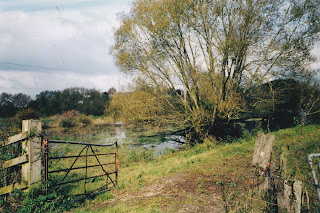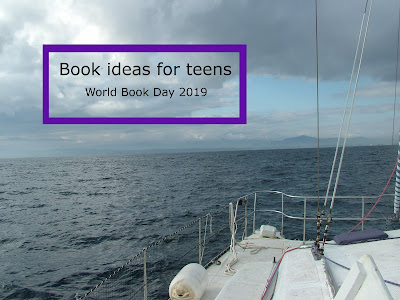The waiting game.
We call it ‘waiting for the weather’. It’s a phrase that we
use often, in texts to family, in a facebook status and in conversations with
other boats. It trips off the tongue easily but means so much more than those
few words actually say. Wind speed, wind direction, gusts, currents, swell,
wave height, wave distance, precipitation, electric storms, visibility – all those
things have to be taken into consideration. Get one of them wrong and it can
put a severe crimp in your day.
The wind needs to blow the right way for sailing boats. You
cannot sail a boat directly into the wind. If the wind is coming straight at you have to
either turn on the engines or tack (go in a zig zag) which can add miles and
hours on to your journey.
The right strength of wind is important. Not enough and we
have to motor all the way which is not the nicest way to make a trip although
most cruising boats apparently motor about 50% of the time. Too much wind and
it becomes dangerous. There is a rule of squares which means that for every doubling
of wind speed the force on the sails quadruples so strain on the boat and the
sailors is increased by four times (the square of two), triple the wind speed
and the forces multiply by nine times. We’ve been out in force 6, the skipper
has been out in force 9 but it’s not a good thing to do with your entire house
and family.
 |
| Short wave length - very choppy. |
Then there are the waves. For us they have to be below 2
metres, that is a figure we set ourselves after a few scary trips. Waves slam
into the bridge deck, things bang, the boat shakes and flexes, moving around is
difficult and it is not pleasant.
And there is also the wave distance to consider, if the
waves are close together it is nasty. With big gaps between each wave it can be
an interesting trip gently riding up and down the hills and valleys especially
when all you can see is water above you in front and behind.
Sometimes you have to wait for the water. This is known as a
tidal gate. sometimes the tide has to be right before you can leave somewhere,
other times it has to be right to enter somewhere, other trips it is both the
start and end which makes life quite exciting trying to get the timing right. There
are also harbours which have locks or sills which rely on there being the same
amount of water on both sides. These things are more common in Brittany where the tidal
range is so big. The other problem with tidal gates is when you are planning a
longer trip. If you are restricted to when you can leave it can mean arriving
at the next port at an awkward time of day.
 |
| The notorious Portland race, Dorset, England. |
Then there are currents, the strength and direction are important
in deciding between a good trip, an uncomfortable trip or a dangerous trip. We
have come down some rivers at 2-3 times our normal speed pushed along by the
currents. Now imagine the same current pushing against you. In the races of Raz
de Sein and Portland a current against you or against the wind becomes very
dangerous making timing really important – there is just a 15 minute window of
error for the Raz, quite a challenge if you are coming from over a hundred
miles away – which we did heading north.
Every boat has their favourite weather report and most use 2
or 3 so that everything can be compared to get the best chance of a reliable
forecast. As a cruiser you live with the weather all the time and learn, very
quickly, what the limits of your boat and crew are. There are always things
which can be done or seen ashore whilst waiting for the weather, taking a
chance with the house and family just isn’t worth it.
You can also follow Tarquilla on Facebook.




Comments
Post a Comment